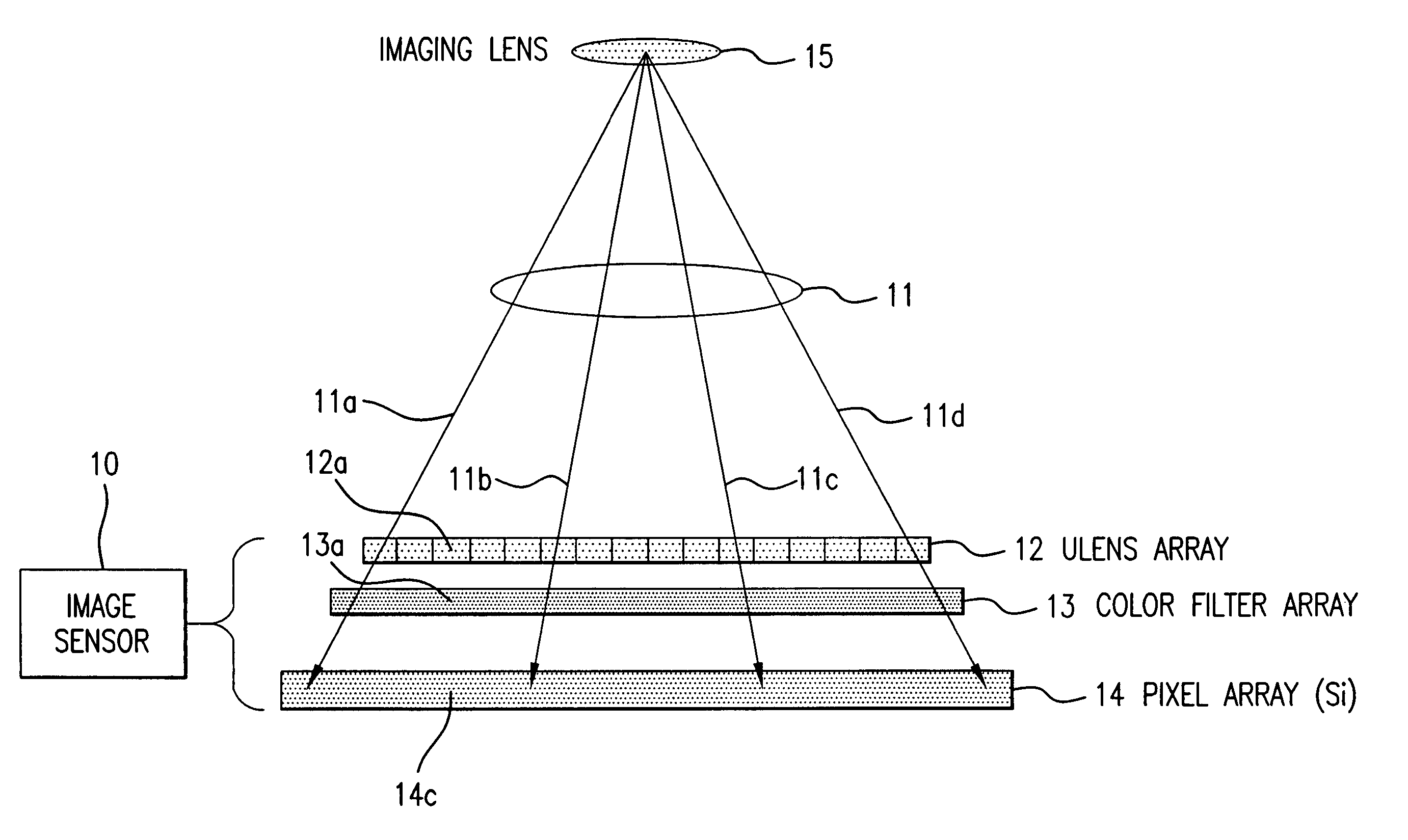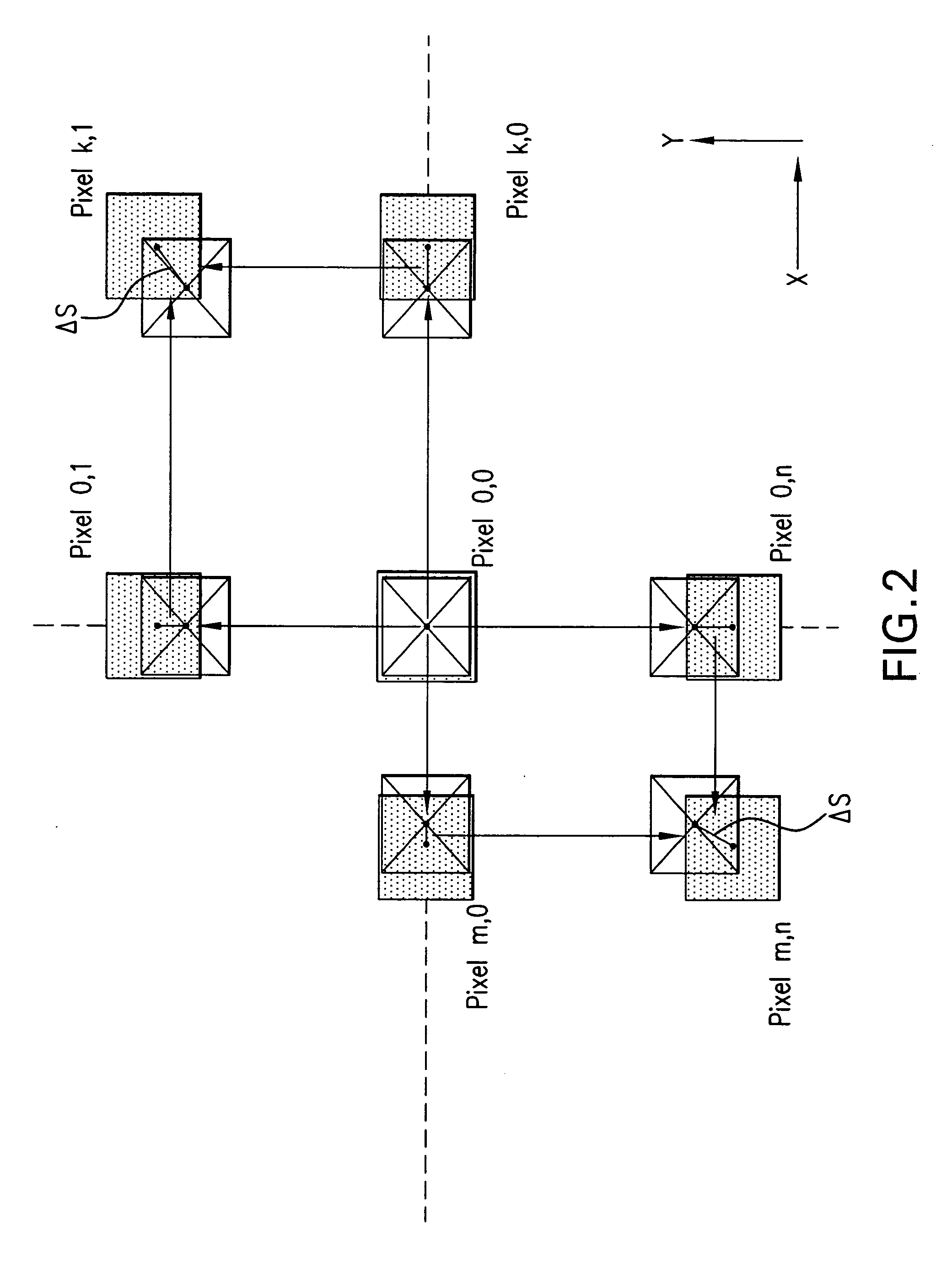Circular symmetrical microlens/color filter array shift and digital lens shading correction
a microlens and filter array technology, applied in the field of imaging systems, can solve the problems of large (up to 50%) degradation of light intensity across the array, significant shift of individual pixels within the pixel array, and large (up to 50%) reduction of light intensity
- Summary
- Abstract
- Description
- Claims
- Application Information
AI Technical Summary
Benefits of technology
Problems solved by technology
Method used
Image
Examples
Embodiment Construction
[0027] The term “pixel,” as used herein, refers to a photo-element unit cell containing a photosensor device and associated structures for converting photons to an electrical signal. For purposes of illustration, a representative three-color R, G, B pixel array is described herein; however, the invention is not limited to the use of an R, G, B array, and can be used with other color arrays, one example being C, M, Y, K (which represents cyan, magenta, yellow and black color filters). In addition, the invention can also be used in a mono-chromatic array where just one color is sensed by the array. Accordingly, the following detailed description is not to be taken in a limiting sense, and the scope of the present invention is defined not by the illustrative embodiments, but by the scope of the appended claims.
[0028] It should also be understood that, taken alone, a pixel does not distinguish one incoming color of light from another and its output signal represents only the intensity ...
PUM
 Login to View More
Login to View More Abstract
Description
Claims
Application Information
 Login to View More
Login to View More - R&D
- Intellectual Property
- Life Sciences
- Materials
- Tech Scout
- Unparalleled Data Quality
- Higher Quality Content
- 60% Fewer Hallucinations
Browse by: Latest US Patents, China's latest patents, Technical Efficacy Thesaurus, Application Domain, Technology Topic, Popular Technical Reports.
© 2025 PatSnap. All rights reserved.Legal|Privacy policy|Modern Slavery Act Transparency Statement|Sitemap|About US| Contact US: help@patsnap.com



